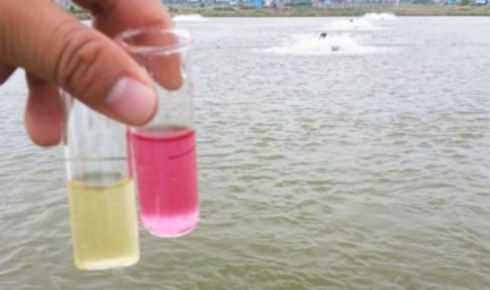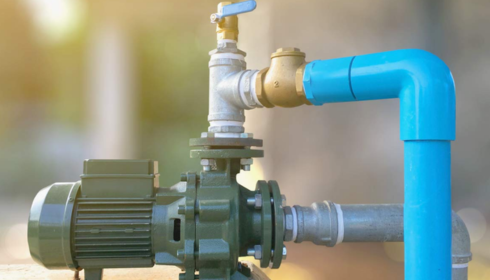When Water Turns Silent: Understanding and Solving the Hidden Problem of Nitrates

It’s strange how something as simple and life-giving as water can also carry silent threats. Most people think of water as either clean or dirty — crystal clear or muddy brown. But what if it looks perfect, tastes fine, and still hides something harmful? That’s exactly the case with nitrates in water — invisible contaminants that don’t make noise but quietly affect lives, especially in rural and agricultural communities.
You don’t smell it. You don’t taste it. And unless you test it, you’d never know it’s there. Yet, these colorless, odorless compounds can cause serious health concerns, from infant “blue baby syndrome” to long-term risks related to heart and thyroid problems. It’s unsettling to think that the very water people drink daily could be silently working against them.
The Hidden Journey of Nitrates into Your Water
To understand how this happens, let’s rewind a bit. Nitrates come mainly from fertilizers, animal waste, and decaying organic matter. On farms, nitrogen-rich fertilizers help crops grow faster and stronger. But rain doesn’t always cooperate with our best intentions. When it pours, those nitrates don’t just stay in the soil — they seep into groundwater and run off into rivers and wells.
In rural areas, where people often rely on private wells rather than municipal water supplies, this can be a serious issue. Unlike city systems that constantly test and treat water, private wells depend on individual maintenance and awareness. And let’s be honest — most homeowners don’t test their wells nearly as often as they should.
It’s not about panic. It’s about awareness. Once you understand how these compounds enter your drinking supply, the next question is: how do you know if they’re there?
Why Water Testing Isn’t Optional Anymore
We test cars for emissions, homes for termites, and blood for cholesterol — but water often gets overlooked. That’s where water nitrates testing comes into play. This simple test can reveal whether your water contains nitrate levels above the safe limit (10 mg/L, as per EPA standards in the U.S.).
Testing kits are widely available, and many local health departments even offer low-cost or free testing programs for private wells. The process is quick and straightforward — you collect a small sample and send it to a certified lab. Within days, you’ll know if your water is safe or needs attention.
The results can be eye-opening. Sometimes, families who’ve been drinking their well water for decades discover levels twice or three times higher than what’s considered safe. It’s not their fault — nitrate contamination can take years to build up, slowly creeping through soil and aquifers. But knowing the numbers gives you the power to act.
What Happens When Nitrate Levels Are Too High
When nitrates enter the body, they interfere with the blood’s ability to carry oxygen. That’s why infants under six months are particularly vulnerable — their bodies can’t handle the excess, leading to a condition called methemoglobinemia, or “blue baby syndrome.”
But it doesn’t stop there. Long-term exposure, even at low levels, has been linked to thyroid disorders, increased risk of certain cancers, and complications during pregnancy. The more we study it, the clearer it becomes that nitrate contamination isn’t just a farm or well-owner problem — it’s a public health issue.
Some communities have faced devastating outcomes, forcing them to install large-scale treatment systems or even switch entirely to bottled water. These are extreme cases, but they highlight an important truth: prevention is always cheaper and safer than reaction.
Proven Methods for Nitrate Removal
Here’s the hopeful part — solutions exist. If your test shows contamination, don’t panic. Modern water treatment technology offers several effective ways for nitrate removal, depending on your setup and budget.
Reverse osmosis systems, for example, can remove up to 95–98% of nitrates. Ion exchange systems work like water softeners, swapping nitrate ions with harmless ones. Distillation is another reliable method, though it can be energy-intensive. Each approach has pros and cons, but what matters most is tailoring the system to your specific water source and nitrate levels.
If you’re unsure, consulting a certified water treatment professional is a smart move. They can help design a system that ensures your family’s water stays clean, safe, and healthy without unnecessary expense.
Prevention: The Long Game We Often Forget
While treatment is vital, prevention deserves equal attention. Farmers can use smarter irrigation techniques and precision fertilizers to reduce runoff. Homeowners with wells should maintain safe distances between septic systems, fertilizer storage, and the water source. Communities can also collaborate to protect shared aquifers through local conservation programs.
It’s not about blaming anyone — it’s about balance. Agriculture and clean water can coexist if managed responsibly. After all, the goal isn’t to stop farming; it’s to protect the water that sustains both crops and people.
Why This Matters More Than Ever
We live in an age where environmental awareness is finally catching up with convenience. Yet, water contamination remains one of those “out of sight, out of mind” problems. As climate change brings heavier rains and unpredictable weather, runoff issues may worsen, making nitrate contamination even more common.
The takeaway isn’t fear — it’s empowerment. You can’t control every drop of water around you, but you can control what flows from your tap. With a bit of vigilance and the right knowledge, anyone can ensure their drinking water is as pure as it looks.
Closing Thoughts
Clean water shouldn’t be a luxury — it’s a basic human right. Still, purity requires awareness and action. Testing your well, investing in proper treatment, and supporting sustainable practices are small but powerful steps toward protecting something that sustains life itself.
The problem of nitrates isn’t going away overnight, but every test, every filter, and every mindful decision moves us closer to safer water for everyone. So next time you pour a glass, take a moment to appreciate what it represents — not just hydration, but the ongoing effort to keep the invisible dangers at bay.
Because when it comes to water, silence isn’t golden — it’s a reminder to listen closer.






